Do Your Social Relationships Impact Digital Safety?
In our increasingly interconnected world, the question of whether our social relationships impact digital safety is more relevant than ever. Think about it: we share our lives online, often with friends, family, and coworkers. But how do these connections shape our online behaviors and the risks we encounter? The truth is, our social circles can either act as a protective shield or a dangerous gateway to potential threats. Just like a spider web, the connections we form can either keep us safe or ensnare us in a tangle of risks.
At the heart of this discussion lies the concept of trust. Trust is a fundamental element in any relationship, and it extends into our digital interactions as well. When we trust someone, we’re more likely to share personal information, whether it’s through a social media post or a private message. This trust can lead to a false sense of security, making us vulnerable to various online dangers, such as phishing scams or data breaches. Understanding how trust influences our digital interactions is crucial for enhancing security and mitigating risks.
Moreover, our social relationships can significantly influence our awareness of cybersecurity practices. Imagine your friend casually mentioning a new app that promises to keep your data safe. If you trust them, you might be more inclined to download it without doing your due diligence. Conversely, if your social circle is oblivious to cybersecurity threats, you might find yourself in a precarious position, unaware of the dangers lurking in the digital shadows. This dynamic highlights the importance of fostering a culture of cybersecurity awareness within our social networks.
As we dive deeper into this topic, it’s essential to consider the role of peer pressure in shaping online behavior. Just like in real life, peer pressure can have a profound impact on our digital actions. If your friends are engaging in risky online behavior, such as sharing sensitive information or using weak passwords, you might feel compelled to follow suit. This can create a ripple effect, where one person's poor choices lead to a cascade of unsafe practices within a group.
However, it's not all doom and gloom. Social networks can also have positive influences on our digital safety. Supportive relationships can encourage safe online practices, such as using strong passwords or being cautious about sharing personal information. When friends and family reinforce these positive behaviors, it creates a culture of safety that benefits everyone involved. Just as a good coach motivates their team to play better, a supportive social circle can inspire us to be more vigilant online.
On the flip side, negative influences can lead to dangerous online habits. Toxic relationships may compromise an individual's digital safety by normalizing risky behaviors. For instance, if someone is constantly sharing their location on social media or engaging in cyberbullying, it can create an environment where such actions are deemed acceptable. Recognizing these negative influences is crucial for protecting ourselves in the digital landscape.
Additionally, the way we communicate within our social relationships can significantly impact our online safety. Different communication styles affect how we share information and our vulnerability to online threats. For example, someone who is open and expressive may inadvertently share too much personal information, while a more reserved individual might keep their digital life under wraps. Understanding these dynamics can help us navigate our online interactions more safely.
In conclusion, the intricate connections between our social relationships and digital safety cannot be overstated. Whether it’s the trust we place in others, the influence of peer pressure, or the communication styles we adopt, each factor plays a crucial role in shaping our online behaviors and risks. By fostering a culture of cybersecurity awareness and supporting one another in safe online practices, we can create a more secure digital environment for ourselves and our loved ones.
- How can I improve my digital safety through my social relationships?
Fostering open discussions about cybersecurity with your friends and family can enhance your collective awareness and encourage safe practices. - What role does trust play in my online interactions?
Trust can lead to a false sense of security, making you more vulnerable to online threats. Be cautious about what information you share, even with trusted individuals. - Can negative influences in my social circle affect my digital safety?
Yes, toxic relationships can normalize risky behaviors, making it essential to recognize and distance yourself from such influences. - How does peer pressure impact online behavior?
Peer pressure can lead to risky online behaviors, so it's important to surround yourself with individuals who prioritize digital safety.

The Role of Trust in Digital Interactions
Trust is a fundamental element in social relationships that can significantly affect online safety. In our digital age, where interactions often occur behind screens, the essence of trust transforms into a complex web of connections. Think about it: when you trust someone, you’re more likely to share personal information with them, whether it’s through social media, emails, or even online gaming platforms. This sharing can be a double-edged sword. On one hand, it fosters connections and collaboration; on the other, it opens doors to potential risks.
When we engage in digital interactions, we often rely on our instincts and past experiences with others. If you’ve had positive experiences with a friend online, you might feel inclined to share sensitive information, believing they will respect your privacy. However, what happens when that trust is misplaced? The reality is that trust in digital spaces can be fragile. A single breach of trust, such as a friend sharing your private message without consent, can lead to significant repercussions, not just for your relationship but also for your digital safety.
Furthermore, trust extends beyond individual relationships. It encompasses the platforms we use and the communities we engage with. For example, if you trust a social media platform, you’re more likely to share personal details, photos, and thoughts. But this trust can be easily shaken by data breaches or privacy scandals. It’s essential to recognize that our online safety is intertwined with the trust we place in others and the systems we use. This leads us to a crucial question: how can we cultivate trust while ensuring our digital safety?
To navigate this intricate landscape, consider the following aspects:
- Transparency: Open communication about privacy policies and data usage can enhance trust.
- Awareness: Stay informed about potential risks and educate your social circle about safe online practices.
- Boundaries: Establish clear boundaries regarding what information you share and with whom.
In conclusion, trust is a vital component of our digital interactions. It shapes how we communicate, share, and protect ourselves online. By fostering a culture of trust while remaining vigilant about our digital safety, we can create a safer online environment for ourselves and those around us.
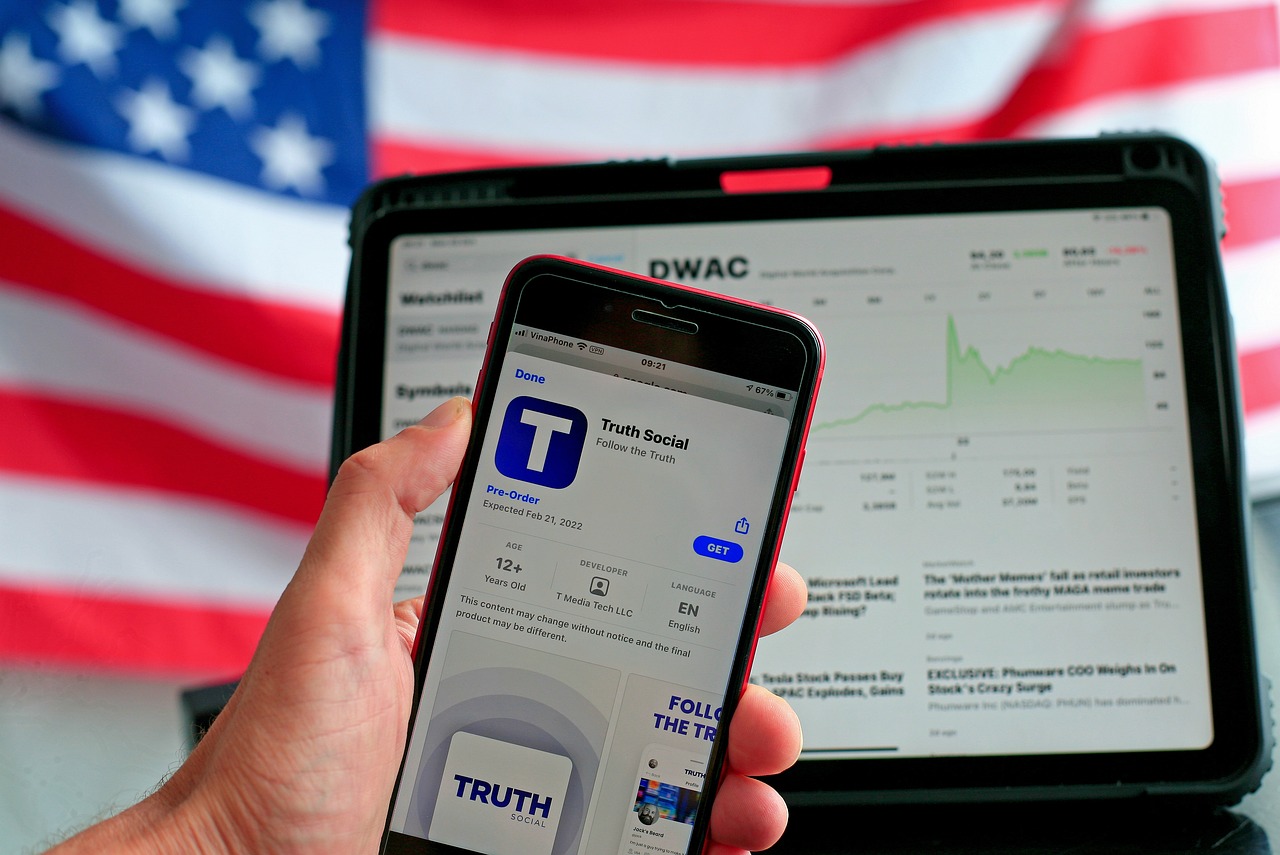
Social Influence on Cybersecurity Awareness
In today's interconnected world, the awareness of cybersecurity practices is not just an individual endeavor; it is profoundly shaped by our social circles. Think about it: when you hear a friend talk about a new security app or a family member share a scary story about identity theft, how does that influence your own approach to online safety? The truth is, our relationships can either bolster or undermine our understanding of digital risks and protective measures.
Consider this: if your close friends are tech-savvy and frequently discuss the importance of strong passwords and two-factor authentication, you are likely to adopt similar practices. On the other hand, if your social circle tends to dismiss cybersecurity as unnecessary, you might find yourself becoming complacent. This phenomenon underscores the vital role of social influence in shaping our attitudes towards cybersecurity.
Moreover, social influence can manifest in various ways, from direct conversations about online safety to the more subtle cues we pick up from our peers' behaviors. For instance, when someone you admire shares a post about a recent phishing scam, it can ignite a sense of urgency and awareness in you. This ripple effect can lead to a collective boost in cybersecurity consciousness within a group, making everyone more vigilant about their online actions.
Interestingly, studies have shown that individuals are more likely to engage in positive cybersecurity behaviors when they perceive that their peers are doing the same. This is where the concept of social norms comes into play. When safe online practices become the norm within a group, they are more likely to be adopted by its members. For example, if a group of friends regularly discusses the importance of not sharing personal information online, it sets a standard that encourages everyone to follow suit.
However, the influence of social circles can also have a dark side. If a person's immediate environment is filled with negative attitudes towards cybersecurity—perhaps viewing it as overly paranoid or unnecessary—the individual may feel pressured to conform to those beliefs. This could lead to a dangerous underestimation of online risks, ultimately compromising their digital safety.
To illustrate this point, let's take a look at a simple table that outlines the positive and negative influences of social relationships on cybersecurity awareness:
| Influence Type | Impact on Cybersecurity Awareness |
|---|---|
| Positive Influence | Encourages sharing of best practices and promotes safe online behaviors. |
| Negative Influence | Can lead to complacency and risky online behaviors. |
In conclusion, the social influence on cybersecurity awareness is a double-edged sword. It can either empower us to take proactive measures to safeguard our digital lives or lead us down a path of negligence. Therefore, it is crucial to surround ourselves with individuals who prioritize online safety, fostering an environment where discussions about cybersecurity are not just welcomed but encouraged. After all, in the realm of digital safety, knowledge is power, and it often comes from the connections we build with others.

Peer Pressure and Online Behavior
Peer pressure has always been a powerful force in shaping behavior, and in the digital realm, it manifests in unique and often concerning ways. When we think about peer pressure, we often picture teenagers succumbing to the whims of their friends, but the reality is that it can affect individuals of all ages, especially when it comes to online activities. The influence of social relationships can lead to a range of online behaviors, from harmless fun to dangerous risks. It’s like being in a crowded room where everyone is dancing; if you don’t join in, you might feel out of place. This analogy perfectly captures how social dynamics can push us toward certain digital actions.
Imagine scrolling through your social media feed and seeing your friends posting wild challenges or sharing questionable content. The urge to participate can be overwhelming, prompting individuals to engage in risky online behaviors they might otherwise avoid. This is particularly evident in trends like viral challenges, where the desire to fit in can lead to sharing personal information, participating in harmful activities, or even engaging with malicious content. The question then arises: how do we draw the line between fun and safety?
Moreover, the anonymity of the internet can amplify these pressures. Individuals may feel emboldened to engage in behaviors they wouldn't consider in face-to-face interactions. For example, the safety of a keyboard can encourage people to post inappropriate comments or share sensitive information without fully understanding the potential consequences. The digital world can sometimes feel like a playground without adult supervision, where the stakes are high and the repercussions can be dire.
To better understand the impact of peer pressure on online behavior, consider the following factors:
- Social Validation: Many individuals seek approval from their peers, which can lead to sharing content that aligns with group norms, even if it's not safe.
- Fear of Missing Out (FOMO): The desire to be part of the latest trend can push individuals to act recklessly online.
- Groupthink: In a group setting, individuals may suppress their doubts about certain online behaviors, leading to collective poor decision-making.
Ultimately, the impact of peer pressure on online behavior is a double-edged sword. On one hand, it can lead to engaging with exciting content and fostering connections; on the other, it can result in dangerous practices that compromise digital safety. Recognizing these influences is the first step toward cultivating a healthier online environment. By fostering open conversations about digital safety within social circles, individuals can empower each other to make informed choices rather than succumbing to the pressures of the digital crowd.
Q1: How can I protect myself from peer pressure online?
A1: The best way to protect yourself is to cultivate a strong sense of self-awareness and confidence. Surround yourself with positive influences who prioritize safety and encourage open discussions about online behavior.
Q2: What should I do if my friends are engaging in risky online behavior?
A2: It's important to communicate your concerns with your friends. Discussing the potential risks and sharing information about safe online practices can help them reconsider their actions.
Q3: Can peer pressure affect adults as well?
A3: Absolutely! Peer pressure is not limited to teenagers; adults can also feel influenced by their social circles, particularly in professional settings or social media interactions.
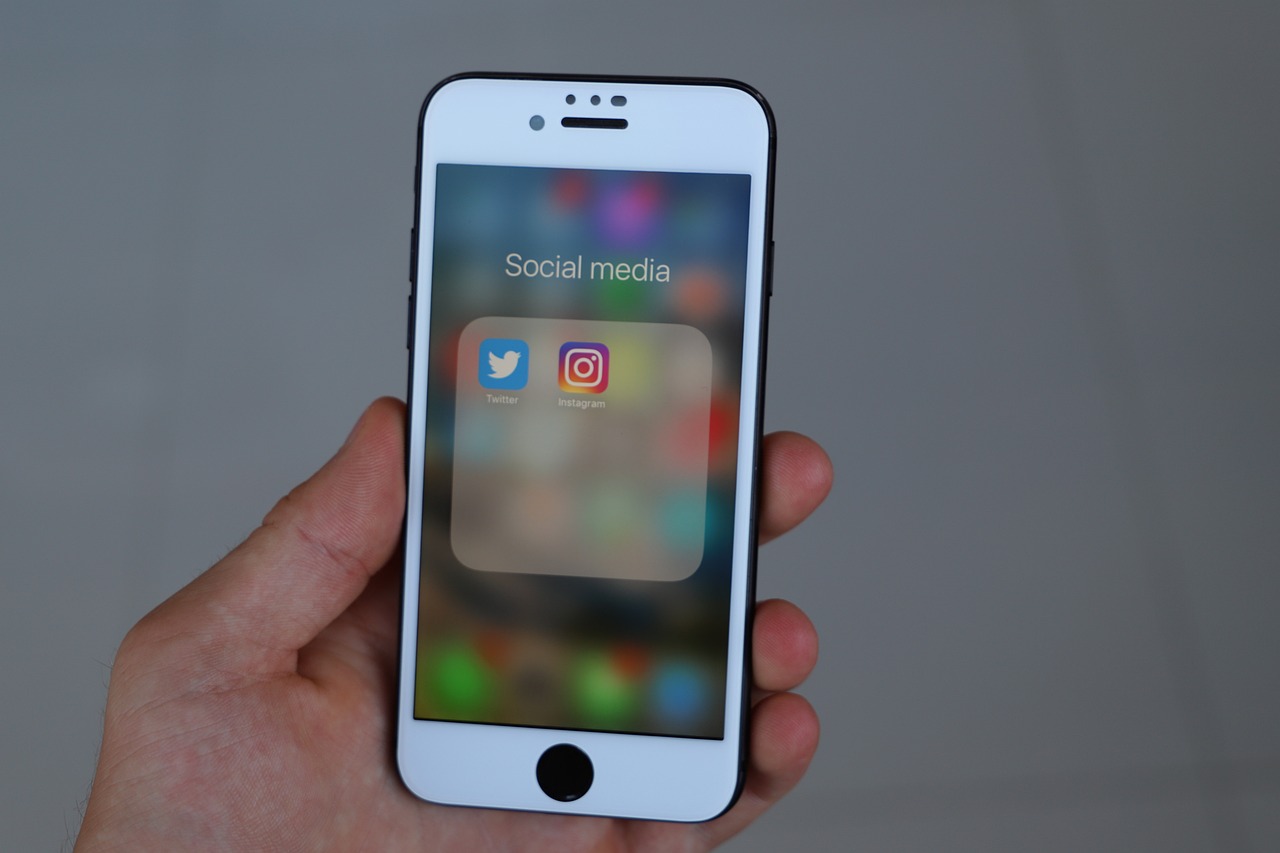
Positive Influences of Social Networks
When we think about social networks, it’s easy to focus on the negative aspects, like cyberbullying or misinformation. However, let’s not forget the positive influences that these platforms can have on our digital safety. In fact, supportive social networks can act like a safety net, providing us with the knowledge and encouragement we need to navigate the digital world securely. Imagine having a group of friends who not only share memes but also discuss cybersecurity practices. This kind of environment fosters a culture of awareness and vigilance.
One of the most significant benefits of a positive social network is the sharing of knowledge. Friends and family can play pivotal roles in educating one another about the latest cybersecurity threats and safe online practices. For instance, if one friend learns about a new phishing scam, they can quickly alert their circle, effectively creating a ripple effect of awareness. This communal knowledge-sharing is particularly crucial because it helps individuals stay informed about potential risks.
Moreover, the encouragement from peers can motivate individuals to adopt safer online behaviors. When you see your friends using strong passwords or enabling two-factor authentication, it can inspire you to do the same. In essence, social networks can function as a positive feedback loop, where safe practices are reinforced and celebrated. This can lead to a more security-conscious mindset among users, ultimately making them less vulnerable to cyber threats.
Additionally, positive social networks can provide emotional support. Navigating the complexities of online safety can be overwhelming, especially for those who may not be tech-savvy. When individuals have a supportive group, they are more likely to ask questions and seek help without feeling embarrassed or judged. This open line of communication is vital; it not only enhances personal security but also builds a community where everyone looks out for one another.
To further illustrate the positive impacts of social networks on digital safety, consider the following examples:
- Group Chats: Many friends create group chats to share information on safe browsing habits, alerting each other about suspicious links or emails.
- Social Media Campaigns: Many organizations run campaigns on platforms like Facebook or Instagram to raise awareness about cybersecurity, encouraging users to share these messages with their networks.
- Support Groups: There are online forums and communities dedicated to discussing digital safety, where members can exchange tips and experiences.
In conclusion, while social networks can expose us to risks, they also have the potential to enhance our digital safety through knowledge sharing, encouragement, and emotional support. By fostering a culture of safety within our social circles, we can collectively create a more secure online environment. So, the next time you log into your favorite social media platform, remember that your connections can be a powerful ally in the quest for digital safety.
Q1: How can I encourage my friends to adopt safer online practices?
A1: Start by sharing articles or resources about cybersecurity in your group chats or on social media. You can also discuss your own practices and the importance of online safety.
Q2: What are some signs of a supportive social network for digital safety?
A2: A supportive network will share information about potential threats, celebrate safe practices, and offer help or advice without judgment. Look for groups that prioritize education and awareness.
Q3: Can social media campaigns really make a difference in cybersecurity awareness?
A3: Absolutely! Social media campaigns can reach a wide audience and raise awareness about important issues, including cybersecurity. They can motivate individuals to take action and share information with their own networks.

Negative Influences of Social Networks
In today's interconnected world, social networks can sometimes act like a double-edged sword. While they can foster connections and provide support, they can also harbor toxic influences that jeopardize our digital safety. Imagine being in a crowd where everyone is taking risks; it can be hard to resist the urge to join in. This phenomenon is not just limited to peer pressure in real life but extends into the digital realm, where the behaviors and attitudes of our social circles can profoundly affect our online actions.
One of the most concerning aspects of negative influences on social networks is the normalization of risky behaviors. For instance, if your friends frequently share their passwords or engage in unsafe browsing habits, you might feel tempted to follow suit, thinking, “If they can do it, so can I.” This kind of thinking can lead to a slippery slope of compromised security. It’s crucial to recognize that what might seem like harmless fun can actually expose you to significant risks, such as identity theft or data breaches.
Moreover, the pressure to maintain a certain image can lead individuals to overshare personal information online. In an effort to fit in or gain approval, people may disclose sensitive details that can be exploited by malicious actors. For example, sharing your location, vacation plans, or even personal struggles can make you a target for cybercriminals or online harassment. This is especially true in environments where validation through likes and comments is prioritized over personal safety.
Another aspect to consider is the psychological impact of negative interactions on social media. Constant exposure to negative comments or cyberbullying can lead to decreased self-esteem, making individuals more vulnerable to risky online behavior as a coping mechanism. In such instances, individuals might engage in reckless online activities as a way to escape their feelings or seek validation from others, further endangering their digital safety.
It's essential to be aware of these negative influences and actively work against them. Here are a few strategies to combat the detrimental effects of social networks:
- Set Boundaries: Be mindful of the information you share online and establish clear boundaries about what you consider safe to disclose.
- Curate Your Circle: Surround yourself with individuals who prioritize digital safety and encourage positive online behavior.
- Educate Yourself: Stay informed about the latest cybersecurity practices and share this knowledge with your social circle.
In conclusion, while social networks can offer a platform for connection and support, they also present numerous challenges to our digital safety. By recognizing the negative influences that can arise from these platforms and taking proactive measures, we can better protect ourselves and foster a healthier online environment.
- How can I identify negative influences in my social network? Look for patterns of risky behavior or attitudes towards digital safety that you find concerning. If your friends often engage in unsafe practices, consider discussing these issues openly.
- What should I do if I feel pressured to share personal information online? Trust your instincts. If something feels wrong, it's best to refrain from sharing. Setting clear boundaries about what you share can help mitigate this pressure.
- How can I promote positive digital behaviors among my friends? Share articles, resources, and tips about digital safety. Encourage discussions about cybersecurity and create a supportive environment where everyone feels comfortable prioritizing their safety.
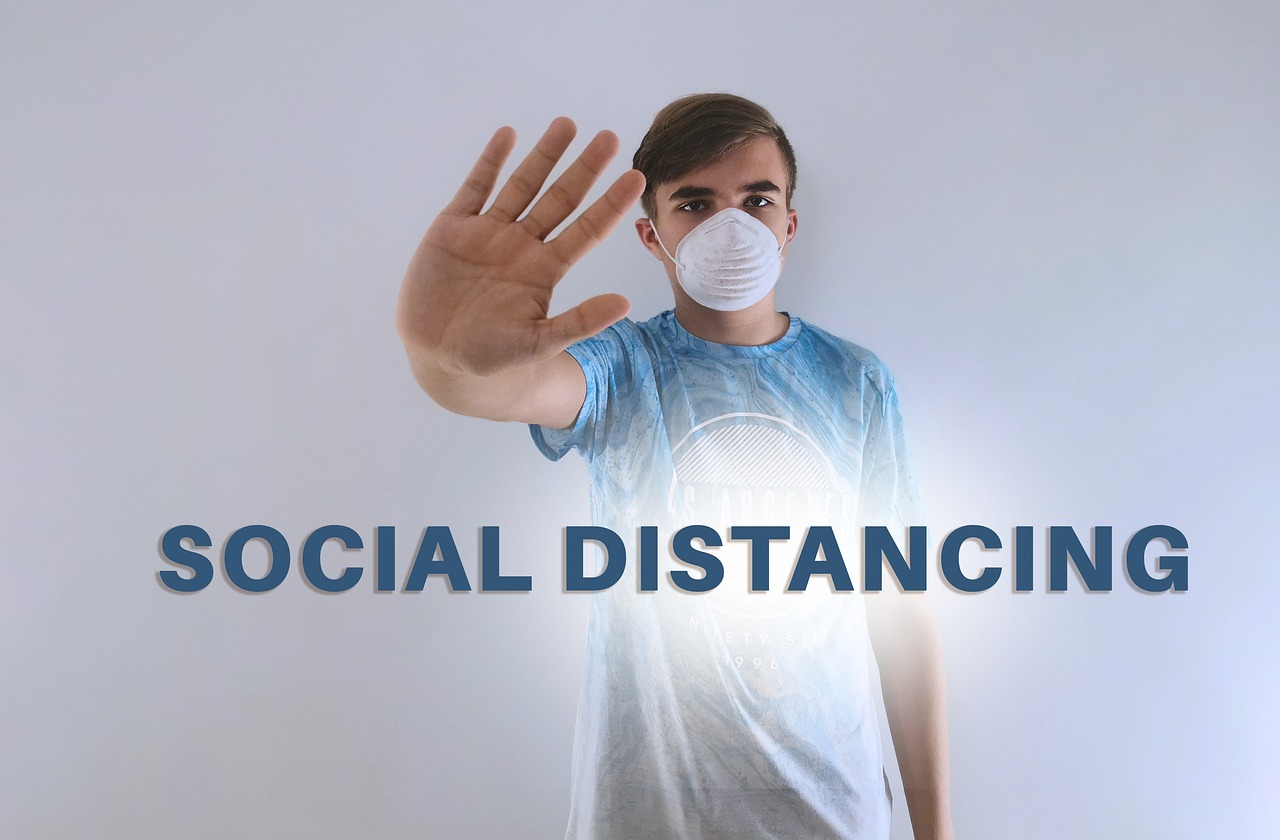
Communication Styles and Digital Safety
When it comes to digital safety, the way we communicate with each other can have a profound impact. Think about it: our communication styles are like the keys to a lock—if they fit poorly, the door to our digital lives can easily swing wide open to threats. For instance, individuals who are more open and expressive in their communication may be more likely to share personal information online, which can lead to vulnerabilities. On the other hand, those who are more reserved might limit their online interactions but could miss out on valuable connections and support.
Moreover, the medium through which we communicate plays a crucial role. Text messages, social media posts, and emails all carry different tones and implications. A casual comment on a public forum could be misinterpreted, leading to misunderstandings that might compromise one’s safety. In contrast, private messages may foster a sense of security but can also create a false sense of anonymity, leading to riskier behavior.
It's essential to recognize that our relationships influence how we communicate. For example, if you often interact with people who share sensitive information freely, you might adopt a similar approach, thinking, “If they can do it, so can I.” This kind of social mirroring can be dangerous, especially when it comes to sharing personal data or engaging in online activities that could expose you to risks.
Additionally, the tone of conversations can either build or erode trust. A supportive friend who encourages you to be cautious about what you share online can help you develop safer habits. Conversely, a friend who dismisses your concerns about privacy might lead you to underestimate the importance of protecting your information. Therefore, understanding the dynamics of your social relationships can be a game-changer in shaping your digital safety practices.
Ultimately, fostering healthy communication styles within your social circles is key. By promoting open dialogues about digital safety, you can create an environment where everyone feels empowered to share their concerns and experiences. This can lead to better awareness of potential risks and more informed decisions about how to navigate the digital landscape safely.
- How can I improve my communication style for better digital safety?
Consider being more mindful about what you share online and encouraging open discussions about digital safety with friends and family. - What role does trust play in my online interactions?
Trust influences how much personal information you share and with whom, which can directly affect your digital safety. - Can my social circle impact my online behavior?
Absolutely! The attitudes and behaviors of those around you can significantly influence how you interact online.
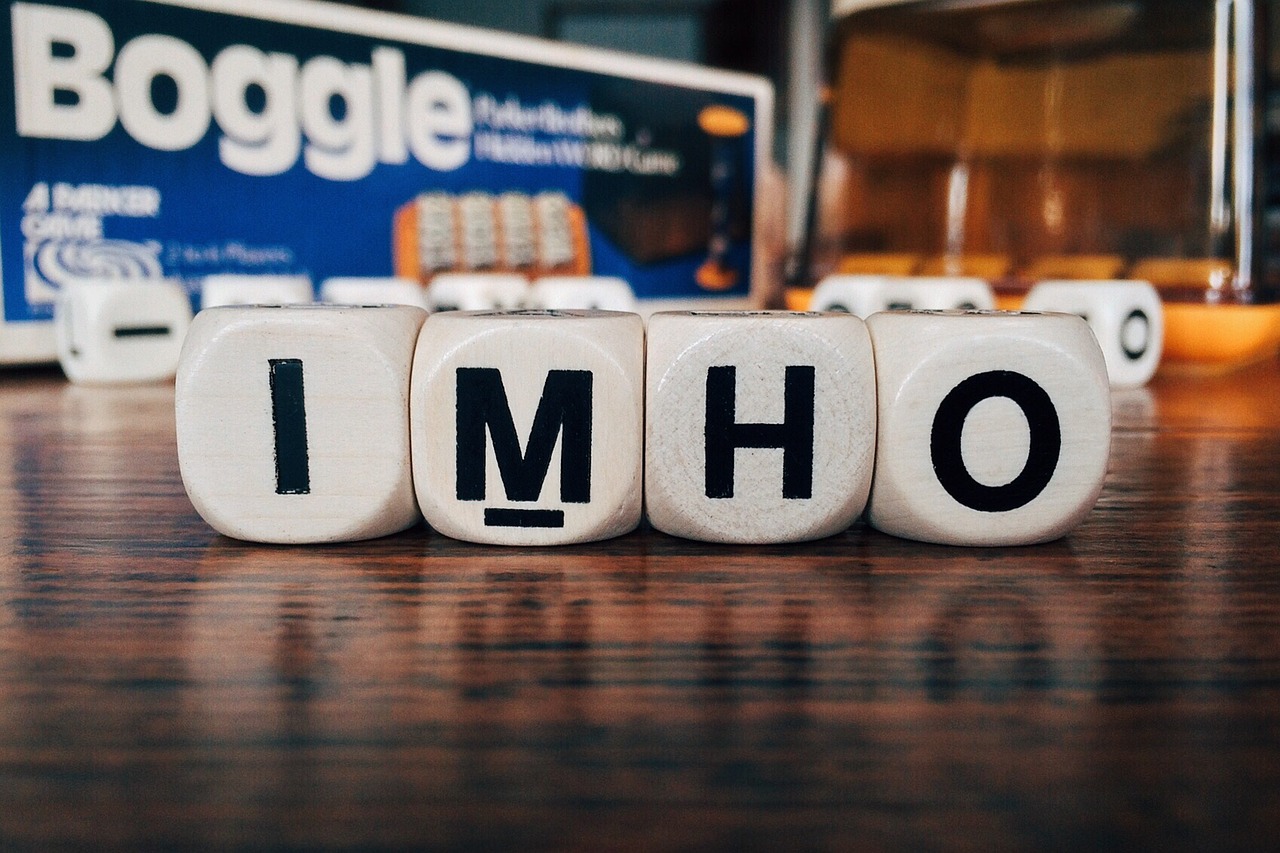
Impact of Social Media on Personal Security
In today's digital age, social media has become an integral part of our lives, shaping not just our interactions but also our perceptions of safety. The is profound and multifaceted. With just a few clicks, we can share our thoughts, experiences, and even our locations with a vast audience. But have you ever stopped to think about how these interactions might affect your safety? It's essential to recognize that while social media can foster connections, it also opens the door to potential risks.
One of the primary concerns is the way social relationships on these platforms can influence our behavior. For instance, when we see our friends sharing their latest adventures in exotic locations, it can create a sense of urgency to do the same. However, this urge can lead to oversharing, which can compromise our safety. Imagine posting a photo of your vacation while you’re still away; this information could be seen by anyone, including those with ill intentions. In essence, the line between sharing and oversharing can become blurred, putting our personal security at risk.
Moreover, the distinction between public and private sharing is crucial. Many users often overlook their privacy settings, allowing their posts to be visible to a broader audience than intended. This lack of awareness can lead to unintended exposure of personal information. For example, consider the following table that illustrates the differences between public and private sharing:
| Aspect | Public Sharing | Private Sharing |
|---|---|---|
| Visibility | Everyone can see your posts | Only selected friends or followers can view |
| Risk | Higher risk of identity theft or harassment | Lower risk, but still possible if friends share content |
| Control | Less control over who sees the content | More control over audience |
As we navigate these social landscapes, it’s vital to be aware of how our sharing habits can create vulnerabilities. For instance, posting about a new job or a recent promotion can be exciting, but it also provides potential hackers with information that can be exploited. This is where understanding the implications of our online presence becomes essential.
Another significant aspect to consider is the management of our online reputation. In a world where a single tweet or post can go viral, maintaining a positive digital footprint is crucial. The way we interact with others online can shape perceptions about us, both personally and professionally. Negative interactions, such as heated arguments or controversial opinions, can tarnish our reputation and lead to unwanted consequences. Therefore, it's important to think critically about how we present ourselves online.
So, how can we protect ourselves in this interconnected world? Here are some strategies to enhance your personal security on social media:
- Adjust Privacy Settings: Regularly review and update your privacy settings to control who can see your posts.
- Think Before You Share: Always consider the potential risks before posting personal information or photos.
- Limit Location Sharing: Avoid tagging your location in real-time to prevent unwanted attention.
- Monitor Your Digital Footprint: Regularly search for your name online to see what information is publicly available.
In conclusion, while social media offers incredible opportunities for connection and self-expression, it’s crucial to remain vigilant about personal security. By understanding the impact of our social relationships and the way they influence our online behavior, we can take proactive steps to safeguard ourselves in the digital landscape.
Q: How can I make my social media accounts more secure?
A: Use strong, unique passwords for each account, enable two-factor authentication, and regularly review your privacy settings.
Q: What should I do if I believe my personal information has been compromised?
A: Change your passwords immediately, monitor your accounts for unusual activity, and consider reporting the incident to the platform and local authorities.
Q: Is it safe to accept friend requests from strangers?
A: It's generally advisable to only accept requests from people you know personally to minimize the risk of exposure to harmful content or scams.
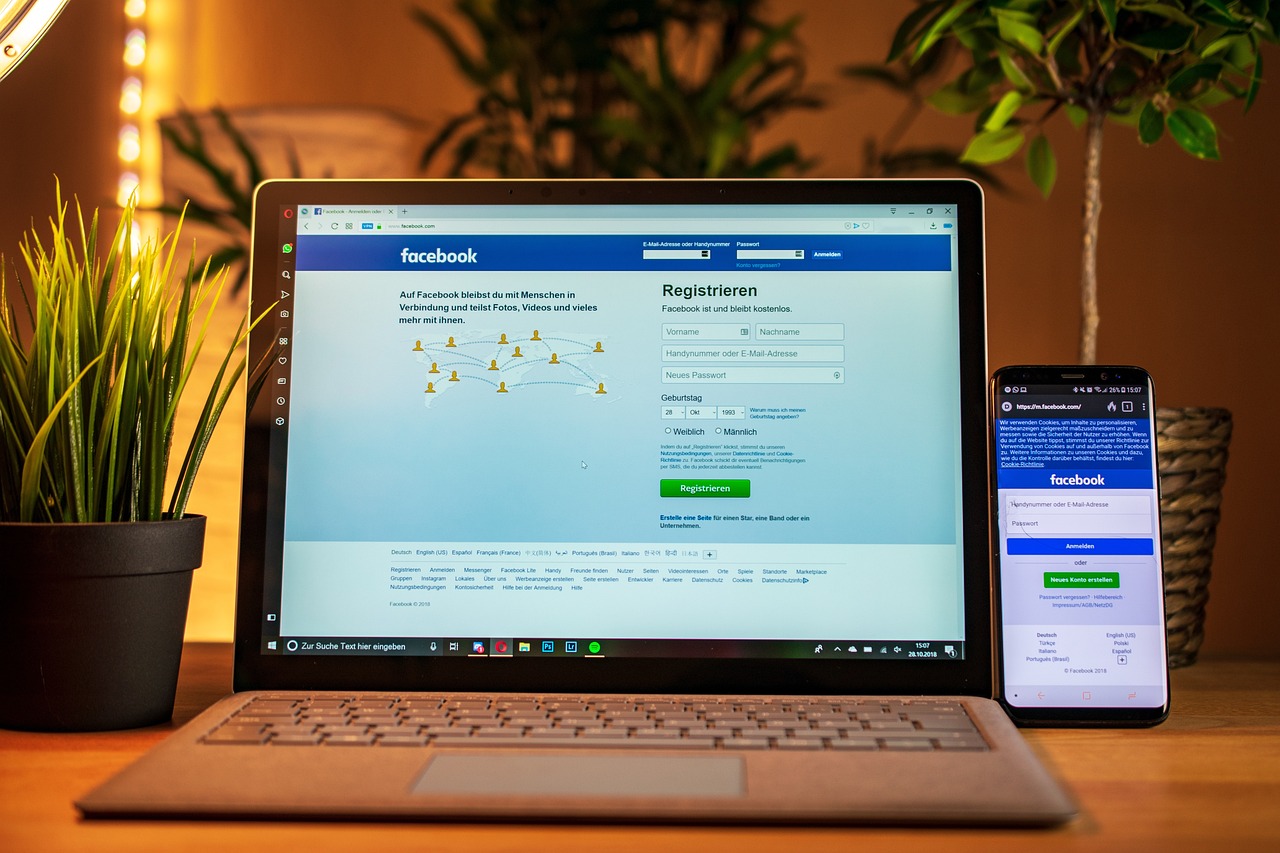
Public vs. Private Sharing
In the vast landscape of social media, the distinction between public and private sharing has become a pivotal concern for individuals navigating their digital lives. Think of it as walking a tightrope; one misstep can lead to a fall into the abyss of unwanted attention or, worse, digital threats. When you share something publicly, it’s akin to throwing a message in a bottle into the ocean—anyone can find it, and you have little control over who sees it or how they might use that information. On the other hand, private sharing is like whispering a secret in a friend’s ear; it feels safe, but it also comes with its own set of risks.
Social relationships play a crucial role in determining how we approach this balance. For instance, friends may encourage us to share more openly, leading to a culture of oversharing that can compromise our safety. On platforms like Facebook or Instagram, the pressure to present a curated life can make individuals forget the potential ramifications of their posts. The allure of likes and comments can overshadow the importance of maintaining privacy. This phenomenon is especially prevalent among younger users who are still learning the ropes of digital etiquette.
Moreover, the nature of your social circle can influence your sharing habits significantly. A supportive group might encourage you to be cautious and think twice before hitting that ‘post’ button, while a more reckless crowd might promote a carefree attitude towards privacy. This is where the concept of digital footprint comes into play. Every post, comment, or photo shared publicly contributes to a lasting online presence that can be difficult to erase. It's essential to remember that what seems harmless in the moment can have long-term consequences.
To illustrate the impact of sharing practices, let’s take a look at the following table:
| Type of Sharing | Implications | Best Practices |
|---|---|---|
| Public Sharing | Wider audience, potential for misuse | Think before you post, limit sensitive information |
| Private Sharing | Limited audience, but still risks of leaks | Use trusted platforms, double-check privacy settings |
In conclusion, understanding the nuances of public versus private sharing is essential for maintaining personal security in the digital age. It's not just about what you share, but also how your social relationships influence your choices. Are your friends encouraging you to be more open, or do they remind you to safeguard your information? The answers to these questions can significantly shape your online safety. So, the next time you're about to share something online, pause for a moment and consider the potential impact of that decision. Your digital safety might just depend on it.
- What is the difference between public and private sharing on social media? Public sharing makes your content visible to everyone, while private sharing restricts visibility to selected individuals or groups.
- How can I ensure my private shares remain confidential? Always use privacy settings provided by social media platforms and share only with trusted individuals.
- What are the risks of oversharing on public platforms? Oversharing can lead to identity theft, cyberbullying, and unwanted attention from strangers.
- How can I educate my friends about safe sharing practices? Open conversations about the importance of privacy and sharing responsibly can help raise awareness.
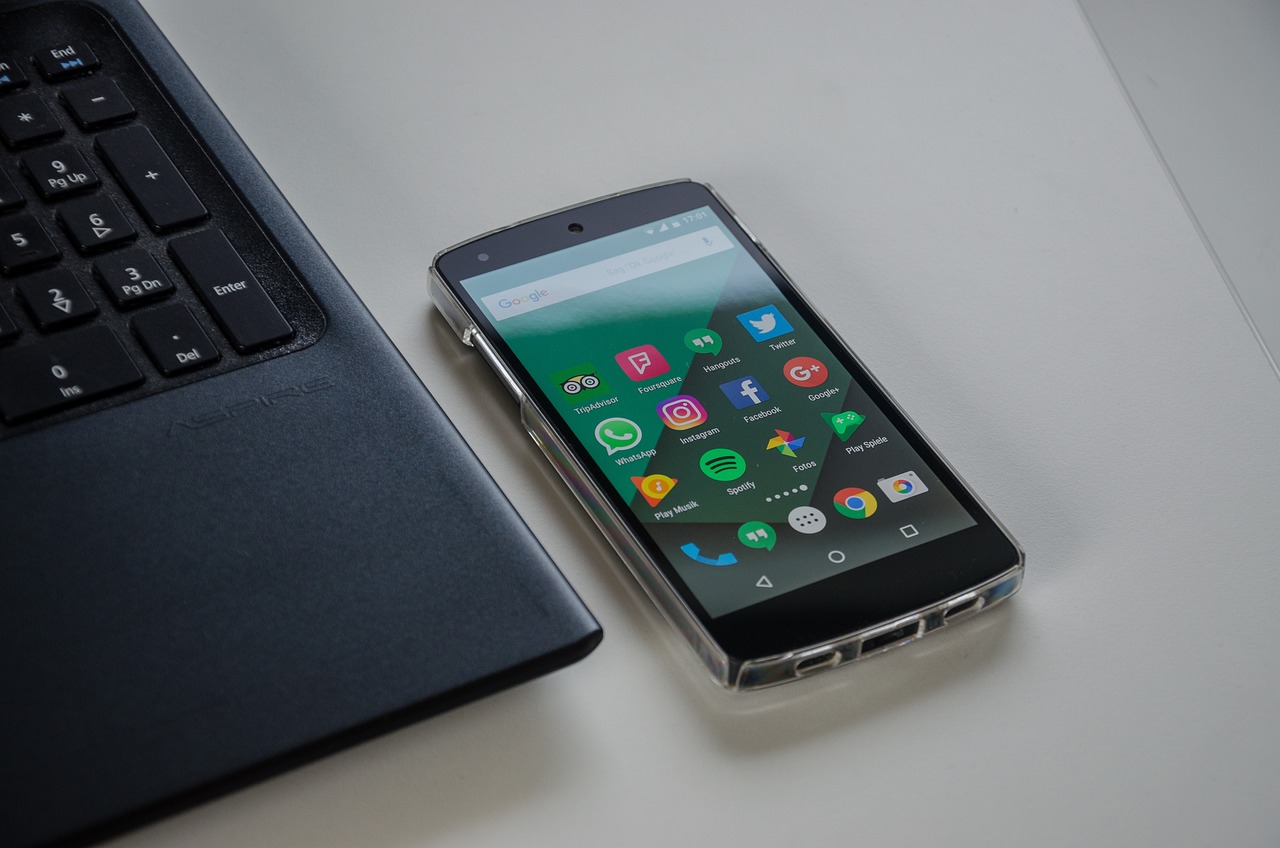
Managing Online Reputation
In today's digital age, managing your online reputation is more crucial than ever. Just think about it: your online presence can shape how others perceive you, whether it's potential employers, friends, or even strangers. With the click of a button, someone can uncover a wealth of information about you, making it essential to be proactive in curating your digital footprint. But how do you effectively manage your online reputation? It's a combination of strategy, awareness, and a sprinkle of social savvy.
First and foremost, you need to understand that your online reputation is a reflection of your social relationships. The connections you forge and the interactions you have can influence what information is available about you online. For instance, if your friends frequently tag you in posts that might not portray you in the best light, it can lead to a skewed perception of who you are. Therefore, it’s vital to communicate with your social circle about the kind of content you’re comfortable sharing. This can help create a buffer against negative portrayals.
Moreover, it’s important to regularly monitor your online presence. Search for your name on various platforms and see what comes up. Tools like Google Alerts can notify you whenever your name appears online, allowing you to stay informed. If you find content that doesn't align with your desired image, take steps to address it. This could mean reaching out to the person who posted it, requesting its removal, or, in some cases, reporting it to the platform if it violates any guidelines.
Another effective strategy is to actively create and promote positive content about yourself. This can include sharing achievements, participating in community events, or even blogging about your passions. When you fill the internet with positive information, it can overshadow any negative content that might exist. It’s like planting seeds in a garden; the more you cultivate the positive, the less room there is for weeds.
Additionally, be mindful of your privacy settings on social media platforms. You may want to keep certain aspects of your life private, and that’s perfectly okay. Adjust your settings to control who can see your posts and what information is shared with the public. Remember, not everything needs to be broadcasted to the world. Setting boundaries can protect your reputation and give you peace of mind.
Lastly, engage with your audience. Respond to comments, engage in conversations, and show that you are approachable. Building a positive rapport with your online community can enhance your reputation and create a supportive network that can vouch for you when needed. In essence, managing your online reputation is not just about what you do, but also about how you interact with others.
In conclusion, managing your online reputation is an ongoing process that requires attention and effort. By understanding the impact of your social relationships and taking proactive steps to curate your digital presence, you can ensure that your online image reflects the best version of yourself. So, are you ready to take control of your online reputation? Your future self will thank you!
- Why is managing my online reputation important?
Your online reputation can affect your personal and professional relationships, job opportunities, and overall image. A positive online presence helps in building trust and credibility. - How can I monitor my online reputation?
Regularly search for your name on search engines and social media platforms. Use tools like Google Alerts to stay updated on any mentions of your name. - What should I do if I find negative content about myself online?
Address it by contacting the poster for removal, reporting it to the platform, or creating positive content to overshadow it. - How can I create positive content about myself?
Share achievements, engage in community activities, and post about your interests and passions to build a positive digital footprint. - Are privacy settings important for managing my online reputation?
Yes, adjusting your privacy settings helps control what information is visible to the public and protects your personal life from unwanted exposure.
Frequently Asked Questions
- How do social relationships affect digital safety?
Social relationships can significantly impact digital safety by influencing our online behaviors and attitudes towards cybersecurity. Trust within relationships often dictates how much information we share and with whom, which can either enhance or compromise our security.
- Can peer pressure lead to risky online behavior?
Absolutely! Peer pressure can push individuals to engage in unsafe online practices, such as sharing personal information or clicking on suspicious links, simply to fit in or gain acceptance within their social circles.
- What role does trust play in digital interactions?
Trust is a cornerstone of social relationships and plays a crucial role in digital interactions. When we trust someone, we are more likely to share sensitive information, which can lead to vulnerabilities if that trust is misplaced.
- How can positive social networks enhance digital safety?
Positive social networks can promote safe online practices by encouraging individuals to adopt cybersecurity measures. When friends and family prioritize digital safety, it creates a culture of awareness and responsibility that can lead to better online habits.
- What are the dangers of sharing information publicly on social media?
Sharing information publicly on social media can expose individuals to various risks, including identity theft and cyberbullying. It's essential to understand the implications of public sharing and to manage privacy settings to protect personal information.
- How can I manage my online reputation?
Managing your online reputation involves being mindful of what you share and how you interact on social media. Regularly reviewing your digital footprint, setting privacy controls, and engaging positively with others can help maintain a favorable online presence.
- Can toxic relationships impact my digital safety?
Yes, toxic relationships can lead to dangerous online habits, such as sharing compromising information or engaging in risky behaviors. It's crucial to evaluate the influences in your life and distance yourself from those that may jeopardize your digital safety.
- How does communication style influence online safety?
Communication styles can greatly affect online safety. Open and honest communication fosters trust and encourages discussions about safe practices, while poor communication can lead to misunderstandings and increased vulnerability.



















